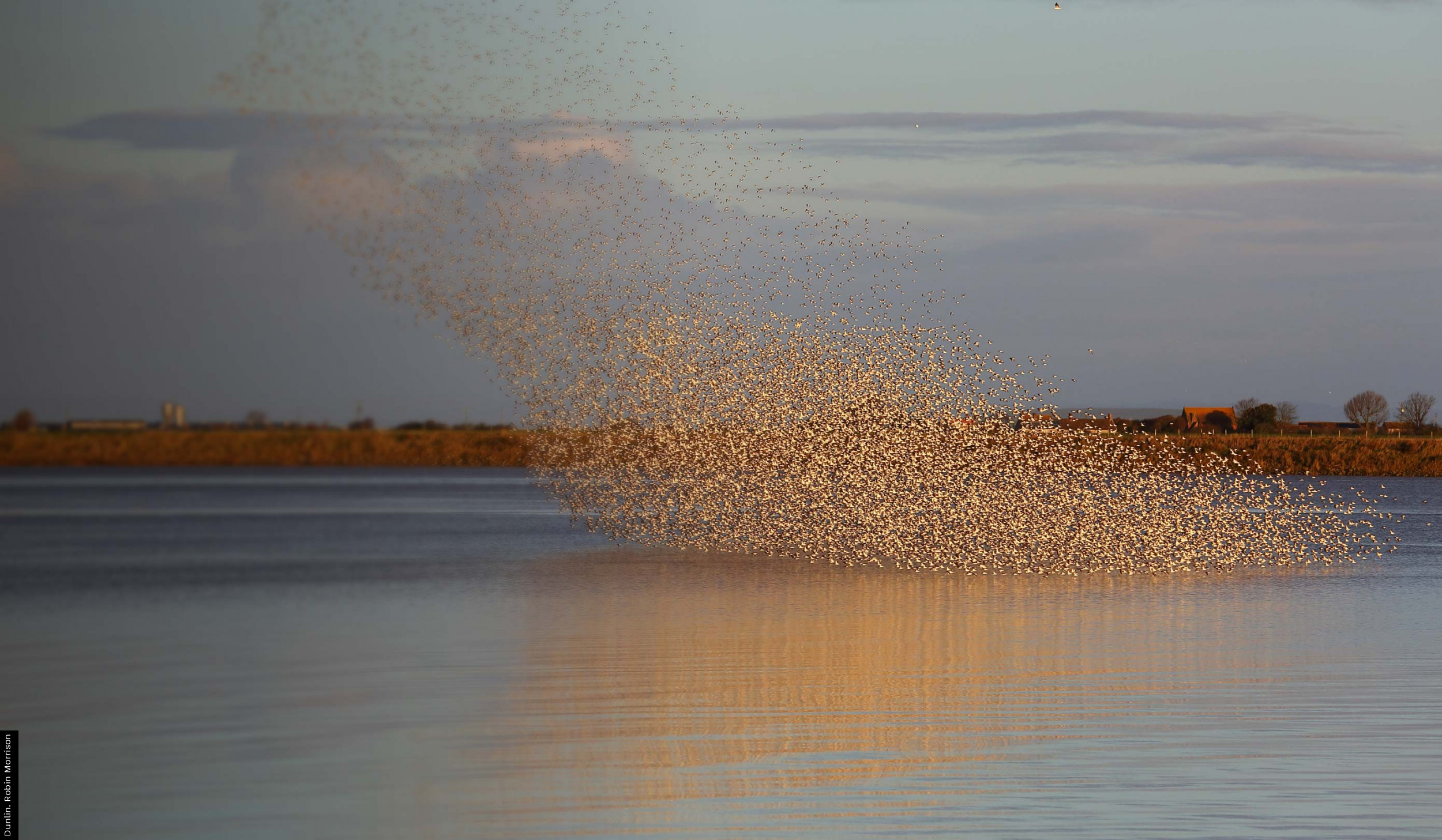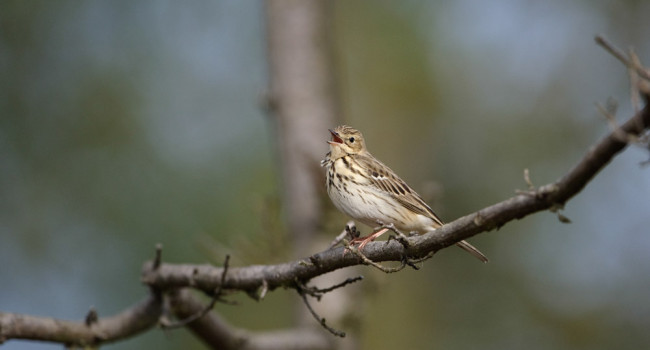Mark Wilson
Acting Head of Science Scotland
Mark is responsible for developing and leading research and contributes to the scientific strategy of BTO Scotland. He manages a small and brilliant team of 3 research and fieldwork staff, and is involved in several BTO projects and external collaborations carrying out research and monitoring work on a wide range of topics including upland and woodland ecology, breeding waders, raptors and acoustic monitoring.
Interests & Responsibilities
Mark joined BTO Scotland as a Research Ecologist at the end of 2013. He was promoted to the role of Senior Research Ecologist in 2021, and in April 2023 assumed the role of Acting Head of Scotland Science.
He has responsibility for leading much of BTO’s research work on raptors, breeding waders, woodland and upland birds, as well as a variety of mostly Scottish work on bird ecology, land use and management, stakeholder engagement and monitoring.
Among the ongoing projects he is involved with are:
- Woodland Opportunities Mapping: a collaboration between Cambridge University, Forestry Commission, Natural England and RSPB. This work is funded by a grant recently awarded by the Cambridge Conservation Initiative. The project will develop create predictive maps that show how different kinds of woodlands in different places might benefit different species of woodland birds. These maps will be help UK governments to improve decision-making about where woodlands are planted in order to ensure that woodland creation yields as large a biodiversity benefit as possible.
- Small migrants tracking: this project aims to inform our understanding of the migration ecology (timing, routes and destinations) of six species of woodland and upland migrant passerines north and south of the border. This work is being carried out with colleagues in Thetford as well as BTO Scotland to deploy miniaturised geolocators on these species. After deploying over 100 tags over two field seasons, the summer of 2023 will be focussed on finding and recapturing tagged birds to retrieve geolocators and find out where they have been!
- Evaluation of Upland Rovers BBS: working with Riccardo Alba of University of Turin to better understand the impact that the Upland Rovers BBS scheme has had on coverage of regions and species, and the potential for this project to improve the quality of BBS trends. This project has focussed on the impacts of visit number and surveyor turnover, to inform decision-making about the future of Upland Rovers. A manuscript based on Riccardo’s work will be submitted to a peer-reviewed journal.
- Waders and Woodland cover: this project was commissioned by Natural England to improve understanding of how waders respond to increased woodland cover, in different landscapes and at different scales. The outputs of this work will be used to inform policies and decision-making relating to woodland creation. A draft report is currently with the funders.
- Volunteer Mountain Hare Survey: this ongoing collaboration between BTO, Mammal Society, GWCT and NatureScot is working with volunteer surveyors to increase the quantity and quality of information on Mountain Hare abundance and distribution, in order to improve our understanding of this species population trends, and our ability to conserve it. We are also taking the opportunity of people being out in the uplands to record hares to ask them to also collect information on a suite of under-recorded upland bird species.
- Scottish Raptor Monitoring Scheme: this scheme is a collaboration between eight partners and aims to provide objective and high quality information about predatory bird populations in Scotland. Mark supports the Scheme Coordinator in managing SRMS datasets, and analysing these in order to improve our understanding of and ability to conserve raptor populations. Recent work with the SRMS has included developing regional and national population trends, and evaluating evidence for the impact of HPAI on Scottish raptors in 2023.
- PhD supervision: Mark is currently supervising 3 exciting PhD projects. These are: Ilaria Lonero at University of Edinburgh looking at effects of climate on nesting phenology of Redstarts; Kian Hayles-Cotton at University of York looking at how woodland creation and management affect ecological networks of woodland species, and the resilience of woodland biodiversity to climate change; and Afthab Faisal at University of Durham developing a collaboration between two citizen science projects, BTO’s long-running Garden Bird Watch scheme and a camera trapping project called MammalWeb.
- Working groups: Mark represents BTO on several partnership working groups including Working for Waders, the Curlew Recovery Partnership Forestry Working Group, Partnership for Action Against Wildlife Crime (PAW Scotland) Science Sub-Group, and the Raptors and Forestry joint working group.
Other Information
‘C’ permit bird ringer. Visiting lecturer at University of Stirling and University of Jos, Nigeria.
Qualifications
- BSc (Hons) Ecological Science, University of Edinburgh in Ecological Science (1992-1996).
- PhD University of Sheffield (2001). Mating system and parental care of Willow Warbler Phylloscopus trochilus.
Recent BTO Publications
Other Publications
Wilson, M.W., Fernandez-Bellon, D, Irwin, S & O'Halloran, J. 2017. Hen Harrier Circus cyaneus population trends in relation to wind farms. Bird Study 64: 20-29.
Challis, A., Wilson, M.W., Holling, M., Roos, S., Stevenson, A. & Stirling-Aird, P. 2016. Scottish Raptor Monitoring Scheme Report 2015. BTO Scotland, Stirling.https://raptormonitoring.org/annual-report
Challis, A., Wilson, M.W., Holling, M., Roos, S., Stevenson, A. & Stirling-Aird, P. 2015. Scottish Raptor Monitoring Scheme Report 2014. BTO Scotland, Stirling. https://raptormonitoring.org/annual-report
Challis, A., Holling, M., Stevenson, A., Roos, S., Stirling-Aird, P. & Wilson, M.W. 2014. Scottish Raptor Monitoring Scheme Report 2013. BTO Scotland, Stirling.https://raptormonitoring.org/annual-report
Graham, C.T., Wilson, M.W., Gittings, T., Kelly, T.C., Irwin, S., Sweeney, O.F.McD. & O'Halloran, J. 2014. Factors affecting the bird diversity of planted and semi-natural oak forests in Ireland. Bird Study 61 (part 3) : 309-320 Link to publication View at journal website (DOI: 10.1080/00063657.2014.927415)
Coote, L., Dietzsch, A.C., Wilson, M.W., Graham, C.T., Fuller, L., Walsh, A.T., Irwin, S., Kelly, D.L., Mitchell, F.J.G., Kelly, T.C. and O'Halloran, J. 2013. Testing indicators of biodiversity for plantation forests. Ecol. Indicators 32: 107-115.
Wilson, M. W., O’Donoghue, B., O’Mahony, B., Cullen, C., O’Donoghue, T., Oliver, G., Ryan, B., Troake, P., Irwin, S., Kelly, T. C. Rotella, J. J. & O’Halloran, J. 2012. Mismatches between breeding success and habitat preferences: A study of Hen Harriers breeding in forested landscapes. Ibis 154: 578-589.
Wilson, M. W., Gittings, T., Pithon, J., Kelly, T. C., Irwin, S. & O’Halloran, J. 2012. Bird diversity of afforestation habitats in Ireland: current trends and likely impacts. Biology and Environment 112B: 55-68.
Copland, A. S., O. Crowe, Wilson, M. W. & O’Halloran, J. 2012. Habitat associations of Eurasian Skylarks Alauda arvensis breeding on Irish farmland and implications for agri-environment planning. Bird Study 59: 155-165.
Sweeney, O., Kelly, T. C., Irwin, S., Wilson, M. W. and O’Halloran, J. 2012. Chapter 9. Woodlands, forestry and scrub, in Bird Habitats in Ireland (John O’Halloran and Richard Nairn, ed.), Collins Press, Cork.
Irwin, S., Wilson, M. W., Kelly, T. C., O’Mahony, B., Oliver, G., Troake, P., Ryan, B., Cullen, C., O’Donoghue, B. & O’Halloran, J. 2011. The breeding biology of Hen Harriers Circus cyaneus in Ireland over a five year period. Irish Birds 9: 165-172.
Sweeney, O. F. Mc.D., Wilson, M.W., Irwin, S., Kelly, T. C., Gittings, T. & O’Halloran, J. 2011. Breeding birds of native woodlands and plantation forests in Ireland. Irish Birds 9: 181-196.
Wilson, M. W., Irwin, S., O'Donoghue, B., Kelly, T. & O'Halloran, J. 2010. The use of forested landscapes by Hen Harriers in Ireland. COFORD Connects Environment No. 10. Dublin: COFORD.
Wilson, M.W., Gittings, T., Kelly, T.C. & O'Halloran, J. 2010. The importance of non-crop vegetation for bird diversity in Sitka spruce plantations in Ireland. Bird Study 57: 116-120
Sweeney, O. F. M., Martin, R. D., Irwin, S., Kelly, T. C., O'Halloran, J., Wilson, M. W. & McEvoy, P. M. 2010. A lack of large-diameter logs and snags characterises dead wood patterns in Irish forests. For. Ecol. and Man. 259: 2056-2064.
Sweeney, O. F. M., Wilson, M. W., Irwin, S., Kelly, T. C. & O'Halloran, J. 2010. Are bird density, species richness and community structure similar between native woodlands and non-native plantations in an area with a generalist bird fauna? Biodivers. Conserv. 19: 2329-2342.
Sweeney, O. F. M., Wilson, M. W., Irwin, S., Kelly, T. C. & O'Halloran, J. 2010. Breeding bird communities of second rotation plantations at different stages of the forest cycle. Bird Study 57: 301-314.
Sweeney, O. F. M., Wilson, M. W., Irwin, S., Kelly, T. C. & O'Halloran, J. 2010. The influence of a native tree species mix component on bird communities in non-native coniferous plantations in Ireland. Bird Study 57: 483-494.
Wilson, M. W., Irwin, S., Norriss, D. W., Newton, S. F., Collins, K., Kelly, T. C. & O'Halloran, J. 2009. The importance of pre-thicket conifer plantations for nesting Hen Harriers Circus cyaneus in Ireland. Ibis 151: 332-343.
Smith, G. F., Gittings, T., Wilson, M., French, L., Oxbrough, A., O'Donoghue, S., O'Halloran, J., Kelly, D. L., Mitchell, F. J. G., Kelly, T., Iremonger, S., McKee, A. M. & Giller, P. 2008. Identifying practical indicators of biodiversity for stand-level management of plantation forests. Biodivers. Conserv. 17: 991-1015.
Wilson, M. W., Pithon, J., Gittings, T., Kelly, T. C., Giller, P. & O'Halloran, J. 2006. The effects of growth stage and tree species composition on bird assemblages of Irish plantation forests. Bird Study 53: 225-236.
Houghton, J. D. R., Doyle, T. K., Wilson, M. W., Davenport, J. & Hays, G. C. 2006. Jellyfish aggregations and leatherback turtle foraging patterns in a temperate coastal environment. Ecology 87: 1967-1972.
Smith, G. F., Gittings, T., Wilson, M. W., Oxbrough, A., Iremonger, S., O'Halloran, J., Kelly, D. L., O'Sullivan, A., O'Donoghue, S., McKee, A.-M., Neville, P., Mitchell, F. J. G., Pithon, J., Giller, P., O'Donnell, V. & Kelly, T. 2006. Biodiversity assessment of afforestation sites. COFORD and EPA, Dublin.







Share this page